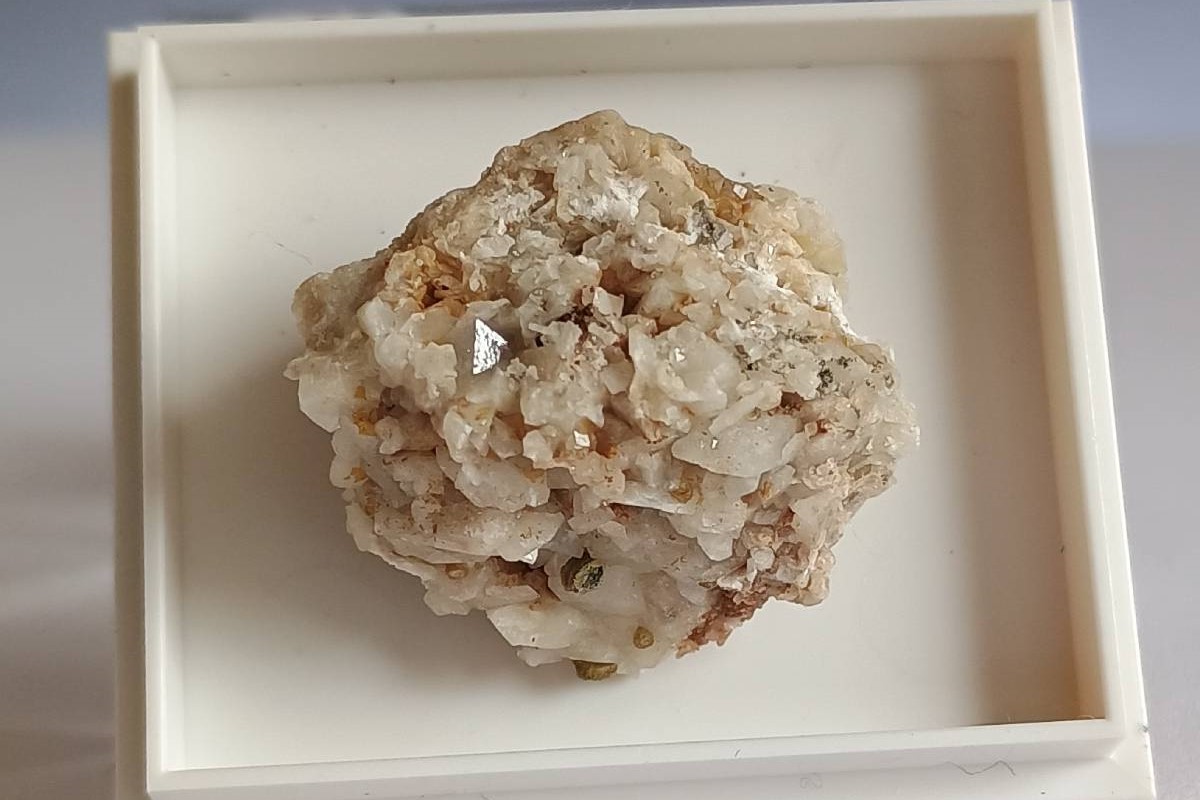
Donnayite-(Y) is a rare mineral that intrigues many due to its unique properties and origins. Found primarily in Mont Saint-Hilaire, Quebec, Canada, this mineral belongs to the carbonate group and contains rare earth elements. Donnayite-(Y) is named after the crystallographers Joseph and Gabrielle Donnay, who made significant contributions to mineralogy. Its crystal structure is complex, often forming in hexagonal shapes with a pearly luster. This mineral is not just a collector's item but also a subject of scientific study due to its unusual composition. Whether you're a geology enthusiast or just curious about rare minerals, Donnayite-(Y) offers a fascinating glimpse into the Earth's hidden treasures.
Key Takeaways:
- Donnayite-(Y) is a rare, fluorescent mineral with unique properties. It's found in specific geological environments and is prized by collectors and researchers for its historical significance and educational value.
- Named after Joseph Donnay, Donnayite-(Y) is a prized specimen for mineral collectors and is used in educational settings to teach students about rare minerals and crystallography. Its unique properties make it a subject of ongoing scientific research.
What is Donnayite-(Y)?
Donnayite-(Y) is a rare mineral with a fascinating history and unique properties. Named after Joseph Donnay, a renowned mineralogist, this mineral is a subject of interest for geologists and collectors alike. Here are some intriguing facts about Donnayite-(Y).
-
Chemical Composition: Donnayite-(Y) has the chemical formula NaCaSr3Y(CO3)6·3H2O. It contains elements like sodium, calcium, strontium, and yttrium.
-
Crystal System: This mineral crystallizes in the trigonal system, which means its crystals form in a threefold rotational symmetry.
-
Color: Typically, Donnayite-(Y) appears colorless or white, but it can also show shades of pale yellow or green.
-
Transparency: It is usually transparent to translucent, allowing light to pass through its structure.
-
Hardness: On the Mohs scale, Donnayite-(Y) has a hardness of 3 to 4, making it relatively soft compared to other minerals.
Where is Donnayite-(Y) Found?
Donnayite-(Y) is not commonly found and is considered a rare mineral. Its occurrences are limited to specific geological environments.
-
Type Locality: The type locality of Donnayite-(Y) is Mont Saint-Hilaire in Quebec, Canada. This site is famous for its diverse and rare mineral species.
-
Other Locations: Apart from Mont Saint-Hilaire, Donnayite-(Y) has also been found in the Kola Peninsula in Russia and a few other isolated locations.
-
Geological Environment: It typically forms in alkaline igneous rocks, particularly in pegmatites and carbonatites.
Unique Properties of Donnayite-(Y)
Donnayite-(Y) possesses several unique properties that make it stand out among other minerals.
-
Fluorescence: Under ultraviolet light, Donnayite-(Y) exhibits fluorescence, glowing a bright yellow or green.
-
Radioactivity: Due to the presence of yttrium, Donnayite-(Y) can exhibit mild radioactivity.
-
Solubility: It is soluble in acids, which can be used to identify and study the mineral.
-
Density: Donnayite-(Y) has a relatively low density, ranging from 3.4 to 3.6 g/cm³.
Historical and Scientific Significance
Donnayite-(Y) holds a special place in the history of mineralogy and continues to be a subject of scientific research.
-
Discovery: It was first described in 1978 by mineralogists who were studying the unique mineralogy of Mont Saint-Hilaire.
-
Naming: The mineral was named in honor of Joseph Donnay and his wife, Gabrielle Donnay, both of whom made significant contributions to crystallography.
-
Research: Ongoing research on Donnayite-(Y) helps scientists understand the formation and evolution of alkaline igneous rocks.
Collecting and Uses
While Donnayite-(Y) is not widely used in commercial applications, it is highly valued by collectors and researchers.
-
Collectibility: Due to its rarity and unique properties, Donnayite-(Y) is a prized specimen for mineral collectors.
-
Educational Value: It is often used in educational settings to teach students about rare minerals and crystallography.
-
Scientific Studies: Researchers study Donnayite-(Y) to gain insights into the geochemical processes that lead to the formation of rare minerals.
-
Display Specimens: High-quality specimens of Donnayite-(Y) are displayed in museums and mineral exhibitions around the world.
-
Preservation: Due to its solubility in acids, collectors must take care to preserve Donnayite-(Y) specimens properly, avoiding exposure to acidic environments.
The Final Word on Donnayite-(Y)
Donnayite-(Y) is a rare and fascinating mineral. It’s got a unique chemical composition and crystal structure that make it stand out. Found mainly in Mont Saint-Hilaire, Quebec, this mineral has intrigued geologists and collectors alike. Its rarity and distinctive properties make it a prized specimen for those lucky enough to find it.
Understanding Donnayite-(Y) helps us appreciate the complexity and beauty of Earth's geological processes. Whether you're a seasoned mineralogist or just curious about the natural world, this mineral offers a glimpse into the intricate dance of elements and time. So next time you come across a piece of Donnayite-(Y), you'll know just how special it is. Keep exploring and stay curious about the wonders hidden beneath our feet.
Frequently Asked Questions
Was this page helpful?
Our commitment to delivering trustworthy and engaging content is at the heart of what we do. Each fact on our site is contributed by real users like you, bringing a wealth of diverse insights and information. To ensure the highest standards of accuracy and reliability, our dedicated editors meticulously review each submission. This process guarantees that the facts we share are not only fascinating but also credible. Trust in our commitment to quality and authenticity as you explore and learn with us.
